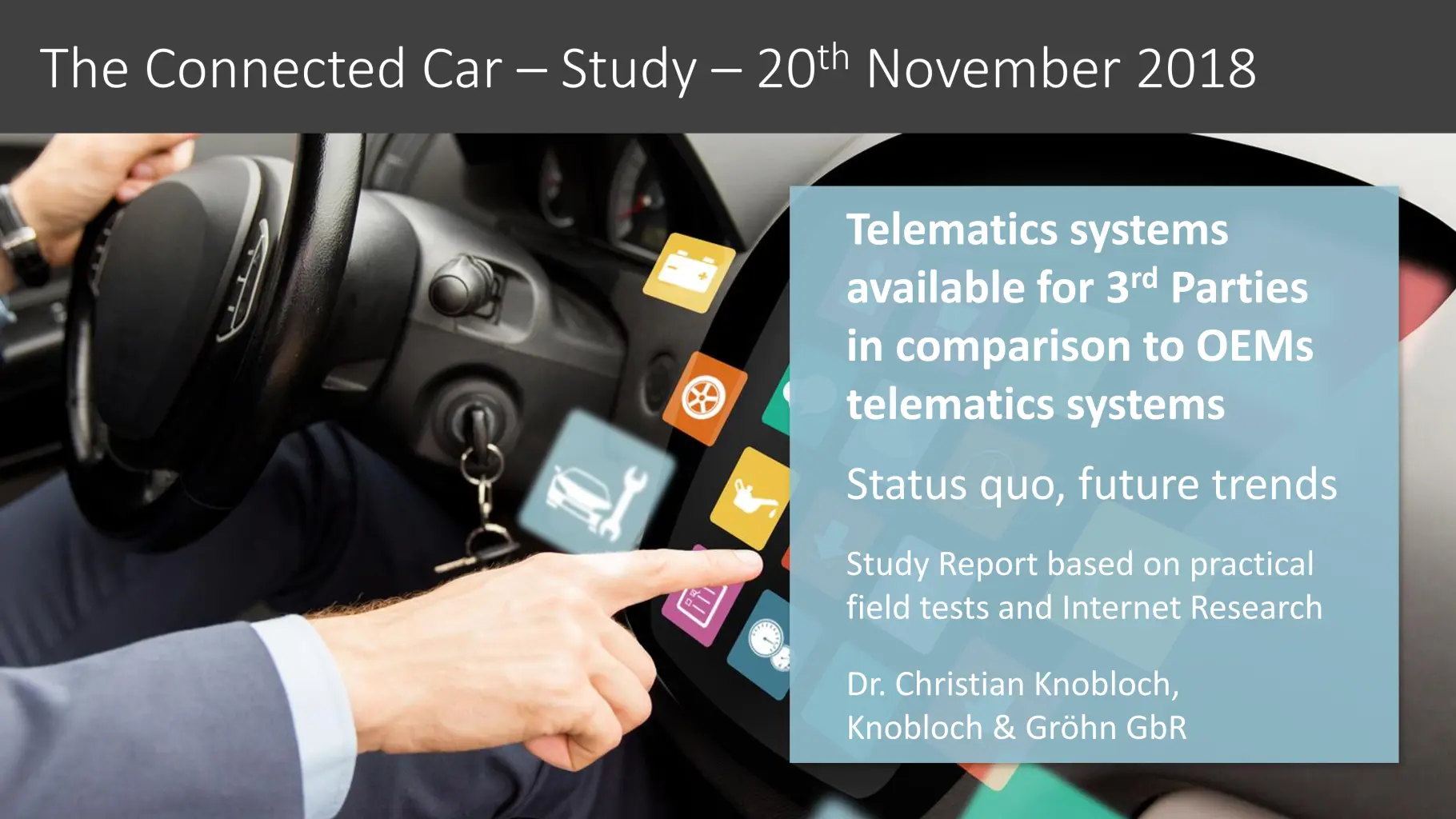To assess the technological feasibility of guaranteeing fair and undistorted competition in the automotive digital aftermarket, several European associations representing independent operators and consumers have commissioned a study to Knobloch & Gröhn, a technology consultancy.
The objective was to find out whether the so-called “Extended Vehicle” (ExVe), as promoted by vehicle manufacturers, could maintain a level-playing field for fair competition between vehicle manufacturers and independent operators. The findings are unequivocal…
Key findings
The study showed, taking the examples of two of the more advanced telematics systems, that vehicle manufacturers have already a privileged position with direct access to the driver as well as to the vehicle, its data and functions, compared to all other third parties operating on the independent automotive aftermarket.
On the other hand, the study unveiled the myth concerning a widespread development of this ExVe model being propagated, as well as not being a fair and equal data access solution: ExVe is neither widely implemented across various vehicle manufacturers, and where it is implemented it provides very poor access to in-vehicle data and functions – which is wholly insufficient for undistorted competitive services.
Instead, it was found that several vehicle manufacturers have developed, or are developing, alternatives access methods based on in-vehicle platforms – although these remain proprietary and only open to the vehicle manufacturers’ chosen partners. However, these proprietary platforms are interoperable and are examples of how independent service providers could have safe and secure access to the vehicle, its data and its functions.
Conclusion
If independent service providers are effectively excluded from the future in-vehicle market for online repair and maintenance services via a functionally limited slow offboard access and a potentially unsafe smart phone interface to the driver while the vehicle manufacturer in its role as a repair and maintenance service provider has a fast, onboard and bidirectional access to all systems and a firm control over the driver via in car controls and digital assistants, the customer choice will likely be severely limited.


